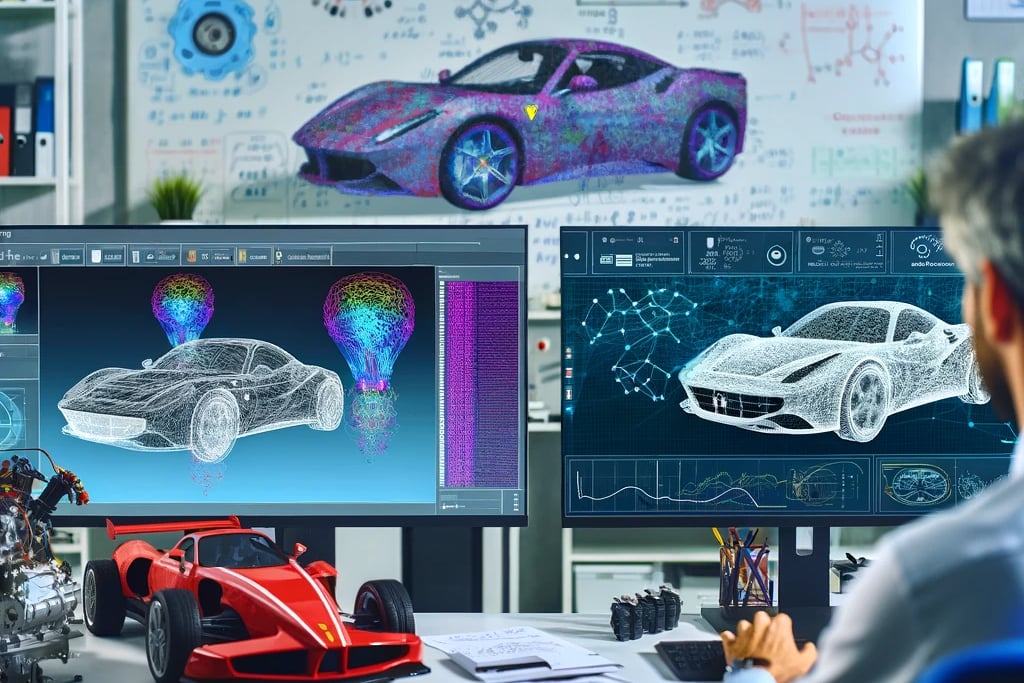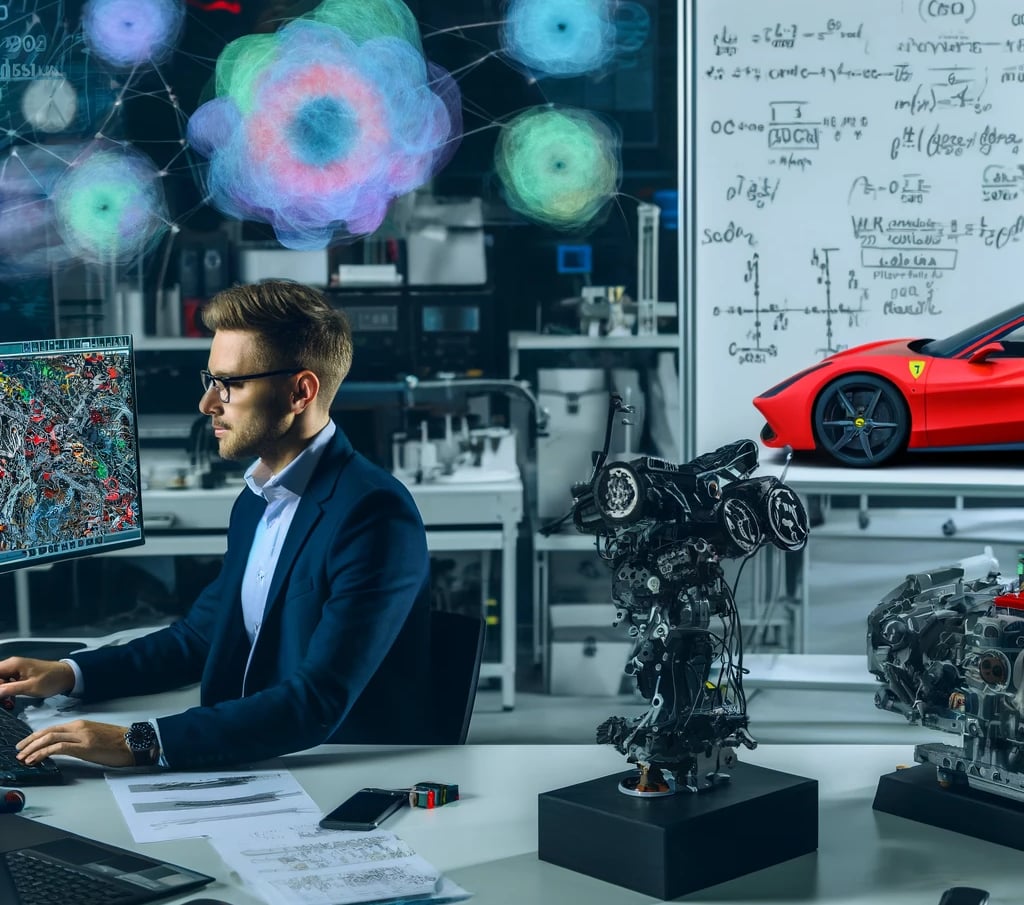My “helpful” AI Powertrain Development Assistant
Revolutionising Powertrain Engineering with Generative AI: Status, Insights and Future Trends #GenAI #AI #LLM #OpenAI #ChatGPT #Ferrari #EV #ElectricMachine #Battery #Powertrain #Engineering #Future
Selin Aria Tur
5/16/20243 min read


Generated by OpenAI ChatGPT-4o based on this article. No we do not develop powertrain as in this image. Not yet anyway!
I earned my engineering degree over 20 years ago, fortunate to be at the forefront of the modelling and simulation curve. After Turkish and English, Matlab/Simulink became my third language and has been ever since. Mastering leading modelling tools allowed me to progress much faster than my colleagues who didn't have the same opportunity, primarily due to the exponential growth in computer science at the time. However, there's no excuse for not learning as you move on. Lifelong learning is mandatory in engineering and tech.
In recent years, my interest in AI has grown significantly. In my former role, I led ML-based automation programs and reviewed projects executed by top engineers developing and integrating AI technologies into innovative products. This exposure sparked my deep interest in AI. As some of my former team members know, I started attending courses and writing code in Python again. This was a joyful experience, reminiscent of my early days in engineering when I was at the forefront of EV and battery technology. My study in machine learning and data science is ongoing, but along the way, I also started experimenting with Large Language Models (LLMs), including both web-based user interfaces and API access on the OpenAI platform. As a side note, I recommend trying Anthropic Claude and Meta Llama3 as well. Groq LPU inference engine is an amazing platform to experiment with Llama3 and Mixtral LLMs too.
Anyway, about three months ago, I decided to experiment with ChatGPT-4 as my “helpful” powertrain development assistant.
This week, after its release, I repeated the same analysis on OpenAI's new model, ChatGPT-4o, using the same prompts for comparison. My prompts were:
You are an automotive powertrain development specialist.
Please provide the mathematical expression of longitudinal forces acting on a vehicle and explain the parameters.
Can you estimate the drag coefficient of the Ferrari Roma? Please reason it.
What are the available tire sizes for the Ferrari Roma?
Assume we are developing an electric powertrain for the Ferrari Roma. The car must accelerate to 100 km/h in 3 seconds and 200 km/h in 9 seconds. Help me size the electric motor to achieve this.
Assume we selected a 500 kW electric machine. Please estimate the acceleration time to 200 km/h.
Let's size the required battery to travel 200 km without needing a recharge using the European urban drive cycle for this estimation.
Can you perform the analysis by building a mathematical model using the longitudinal forces and running the drive cycle?
ChatGPT-4’s responses were reasonably good, except for the battery capacity estimation. It lacked complex mathematical calculations, often using average energy consumption figures for energy calculations. Even with the last prompt, the analysis was a simple average calculation. I remember feeling somehow relief seeing the state of the art. I became quite confident thinking that I would still have a job in the future.


Generated by OpenAI ChatGPT-4o based on this article. Some more development in image generation is needed. Looks interesting at least!
ChatGPT-4o, on the other hand, is a game changer and a glimpse into the future. Not only did it analyse and execute my prompts better, but it also wrote Python code for more detailed analysis. This is likely due to the memory function introduced by OpenAI, which recognises my habit of debugging personal code on ChatGPT.
You can read both sets of responses following links below if interested. I recommend having a look at to the 2nd one, -4o, for the status as of today;
xxxx
xxxx
My takeaway is clear:
All new engineers, regardless of their field, must learn about AI. AI-powered solutions will transform engineers into "10x engineers" enabling them to stay ahead of the curve, much like I did over two decades ago with modelling tools. I believe AI-integrated design and development solutions will shape the future of engineering. Soon, multiple AI agents will work together to develop complex systems like gearboxes: one generates a 3D design, another performs structural analysis, another thermal analysis, and another fluid dynamics, all feeding data back to the first until the design meets the requirements. In the end, one AI will generate manufacturing drawings, while intelligent engineers make decisions considering the pros and cons for specifics and tradeoffs in the process.
Amazing times are ahead! I am looking forward to discovering my role in this journey.
Selin Aria Tur
Written on: 16/05/2024
PS: I wrote the article, edited using ChatGPT-4o, finalised myself manually and used the article to generate images.
PSS: Link to the original post can be seen here.
Connect
info@ecovoltaix.com
